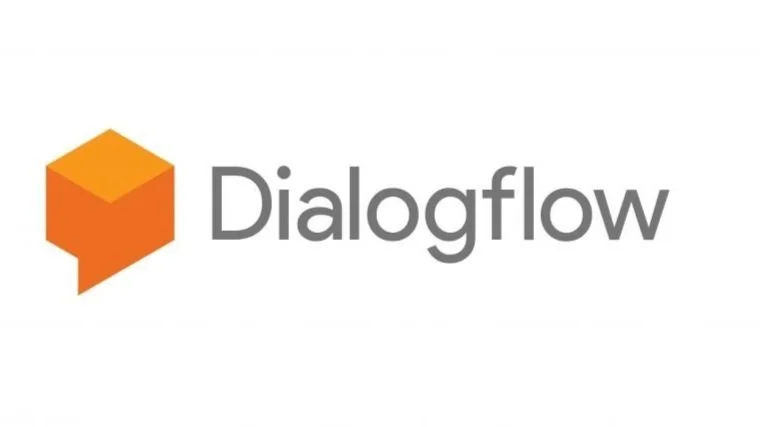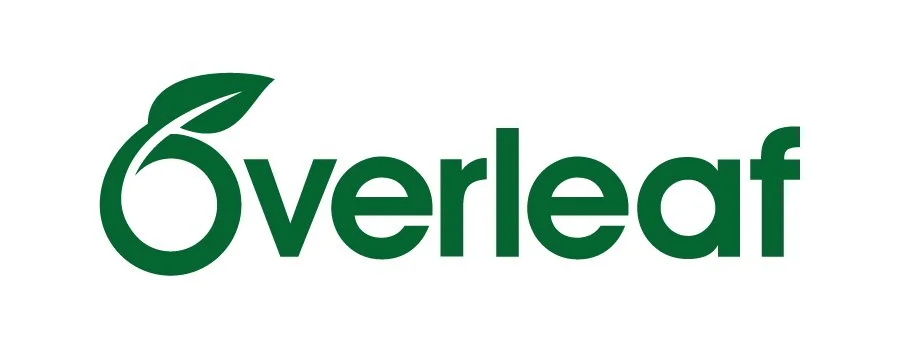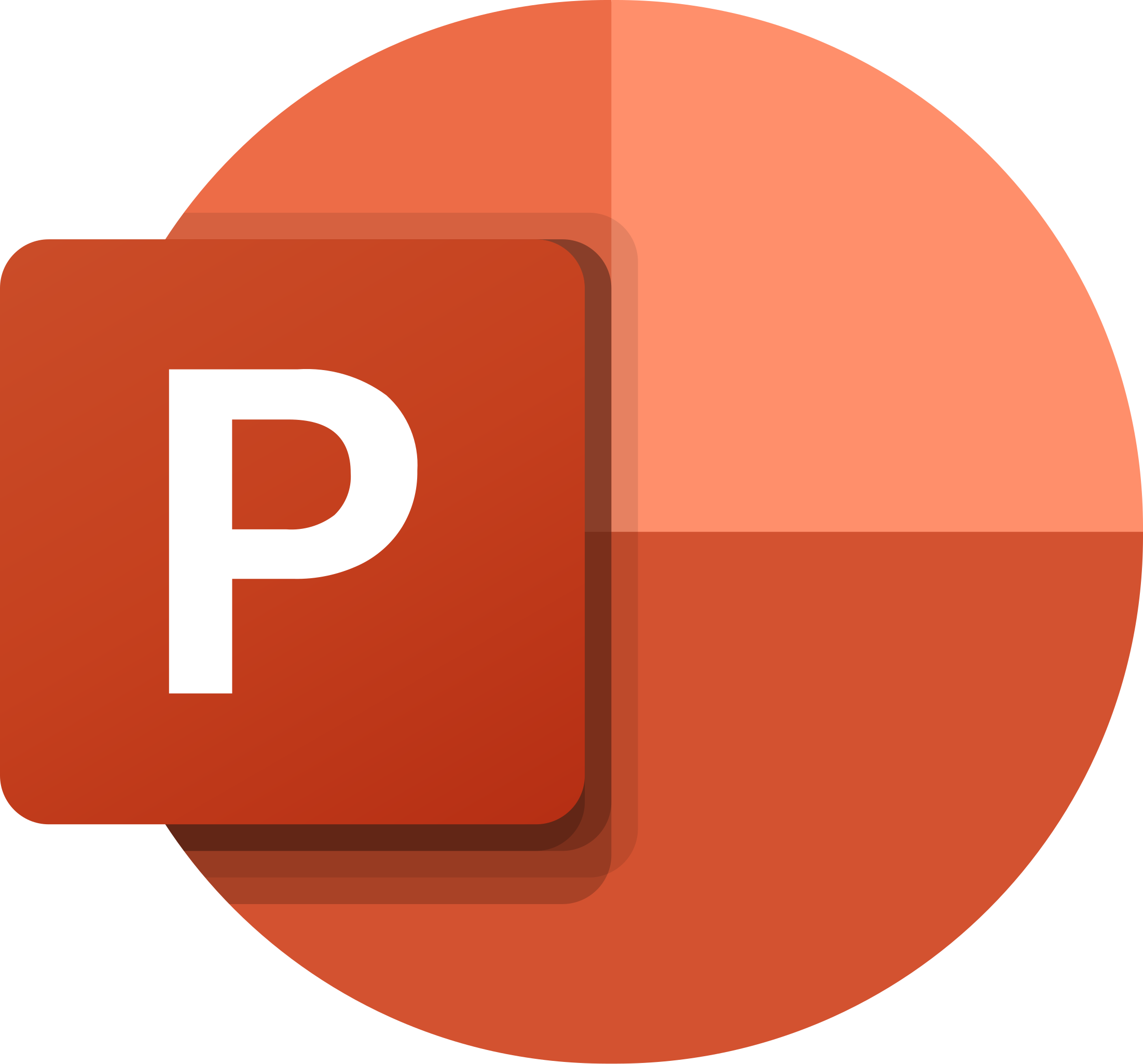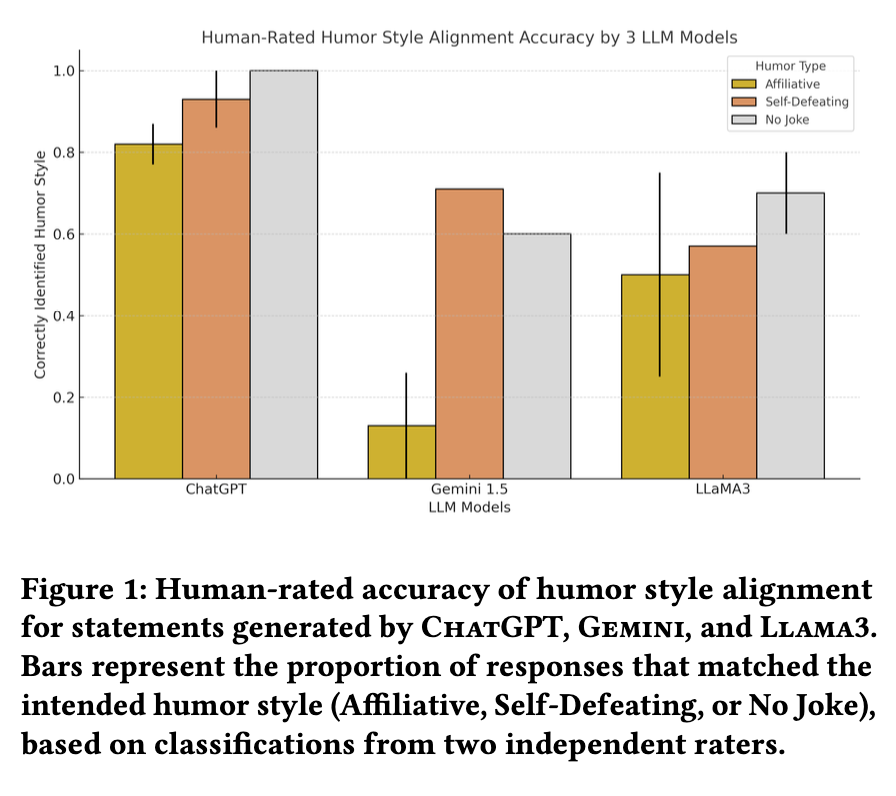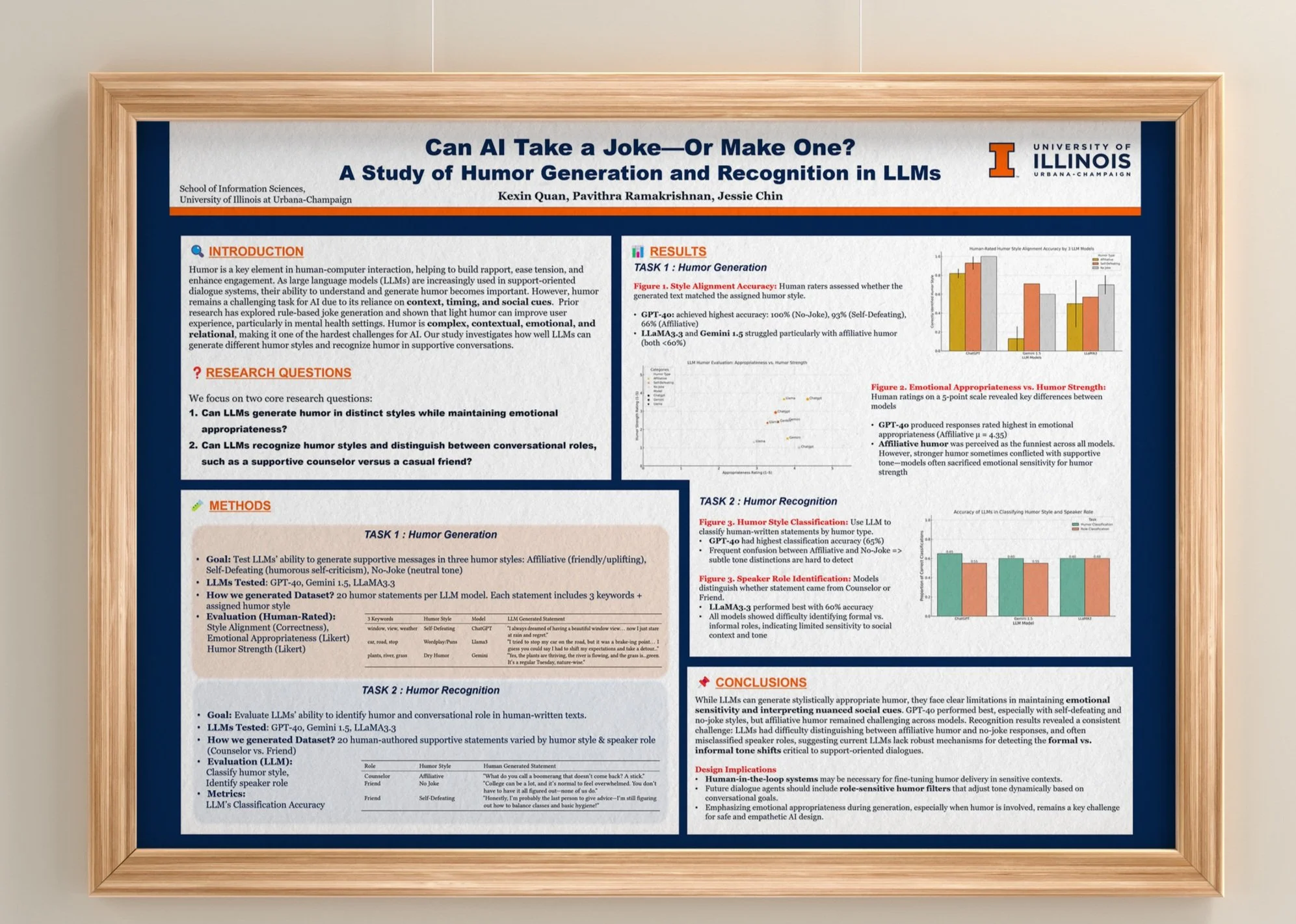
Case Study: Can AI Take a Joke—Or Make One?
Exploring humor in AI-powered support systems
Research | UX Strategy | Conversational Design | NLP
Role: UX Researcher & Chatbot Designer
Team: Pavithra Ramakrishnan, Kexin Quan, Dr. Jessie Chin
Time: Aug 2023 – Present
Conference: ACM Creativity & Cognition 2025 (Poster + Publication)
✨ Overview
Can AI be funny—and emotionally supportive?
Humor is one of the most human tools for connection, yet it’s incredibly difficult for machines to get right, especially in emotionally sensitive conversations. We explored whether large language models (LLMs) like ChatGPT, LLaMA3, and Gemini can generate and recognize humor in a way that’s emotionally appropriate, context-aware, and helpful in support-focused interactions.
🔍 The Challenge
In peer coaching, therapy, and academic advising contexts, humor can help ease tension, but if misused, it risks alienating users or eroding trust.
We asked:
🎯 Project Goals
Build and evaluate 6 chatbot personas with different humor styles
Test how well LLMs generate, classify, and respond to humor in support scenarios
Publish results at a leading HCI conference (ACM C&C 2025)
My Role
Designed all 6 chatbot personas (Google Dialogflow + Slack)
Developed evaluation metrics (tone alignment, emotional fit, humor strength)
Led UX research tasks including data labeling, user testing, and prompt tuning
Co-authored the peer-reviewed ACM paper on Overleaf
Designed the conference poster using Microsoft PPT + Adobe Illustrator
Preparing to be a speaking author at ACM Creativity & Cognition 2025
Skills: UX Research · NLP · Conversational Design · Figma · Illustrator · Academic Writing · Python APIs
💡 Research Approach
💡 Research Approach
Task 1
Humor Generation
We prompted GPT-4o, Gemini 1.5, and LLaMA3 to generate messages using three humor styles:
Affiliative (friendly, uplifting)
Self-Defeating (vulnerable, relatable)
No Joke (emotionally direct)
Example prompt → “window, view, weather”
Response (Self-Defeating): “I always dreamed of a beautiful window view… now I just stare at rain and regret.”
60 human raters evaluated AI responses for:
Humor Style Accuracy
Emotional Appropriateness
Humor Strength
Task 2
Humor Recognition
We asked the same LLMs to classify 20 human-written supportive statements, varying both:
Humor Style (Affiliative, Self-Defeating, No Joke)
Speaker Role (Counselor vs. Friend)
This tested whether models could not only be funny but also understand the context in which humor appears.
Tools & Tech
Google Dialogflow + Slack – Chatbot deployment
Figma + Illustrator – Visual design for poster
Prompt engineering + classification
Google Sheets – Rating collection and analysis
Meet the Slack Chatbots
Designed and developed 6 Emotionally Intelligent Chatbots (EICBs) that combined two support roles—friend and counselor—with three distinct humor styles: no joke, affiliative, and self-deprecating. Built using Google Dialogflow and integrated on Slack, the chatbots were used to simulate emotionally supportive conversations in college student contexts.
📊 Outcomes
Humor Generation
GPT-4o was most accurate in tone and emotional fit
Affiliative humor was rated the most emotionally resonant, yet hardest to generate
LLaMA3 showed the most variability
Gemini struggled with subtle emotional humor
Humor Recognition
GPT-4o correctly classified humor styles more often than others
LLaMA3 did better at identifying roles (Counselor vs. Friend)
All models blurred tone between formal vs. casual roles, risking misalignment
Poster Preview
Accepted to ACM C&C 2025
Designed in Adobe Illustrator, the poster presents all rating metrics and model comparisons visually.
💬 Reflections






